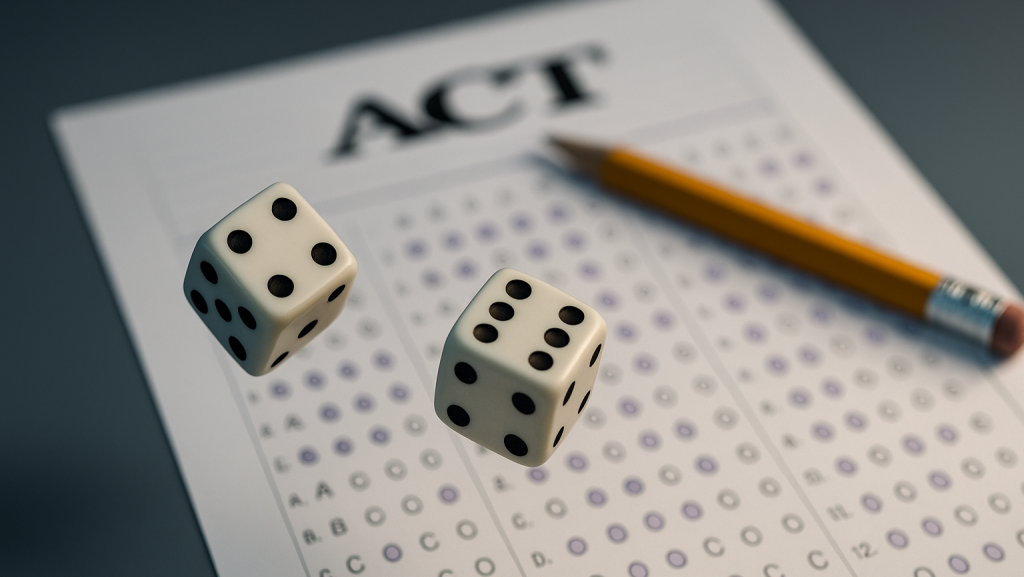The ACT’s Big Change: Shorter Sections, Greater Stakes
ACT has just been updated and with it comes a new opportunity for forward-thinking students. The details of the revision can be found here, but the crucial change is that the sections will be shorter and the Science section is now optional and won’t count toward the total score. While students may appreciate a shorter test with fewer questions, the ACT is creating tremendous potential for students who invest in multiple sittings to achieve higher superscores through an ACT superscore strategy.
What are superscores? They are scores derived from the best sections performances across multiple tests. Thus, if a student scores well on Math during the first test and performs well on Reading and English during a second test (while doing poorly in Math that day), the superscore allows the student to present the best combination of section results. Most colleges evaluate superscores rather than a student’s single best test day. This practice works best when section scores remain relatively consistent, but data released by the ACT show that the shorter section lengths are causing greater variance—sometimes referred to as “noise.” In essence, noise allows for more lucky (or unlucky) bounces.
Variance, Noise, and the Power of Lucky Rolls
The ACT doesn’t prominently publish variance figures, but buried in its technical documentation are the section-specific standard errors of measurement (SEMs) for the redesigned test: about ±2.25 for English, ±1.93 for Math, and a striking ±2.71 for Reading. These figures indicate the range of likely outcomes for a student whose underlying ability remains constant. An SEM of ±2.71 means that a student who performs at a 27 level in Reading will score between 22 and 32 about 95% of the time. That level of volatility is massive. It tells us that even when a student’s actual ability hasn’t changed, their score almost certainly will.
The increased variance in the new ACT can actually work in students’ favor—especially at colleges that accept superscores. Each test sitting becomes a new roll of the dice, and over multiple sittings, students are more likely to encounter a test that plays to their strengths. Superscoring captures the best of these outcomes, making it possible for a student’s final score to exceed their true average—not because they got smarter, but because they played the game often enough to hit a high roll.
Why More Attempts Lead to Higher Superscores
The more times a student takes a test with built-in variance, the more likely they are to outperform their average on at least one section. Let’s consider a motivated student who takes the ACT four times. Statistically, their best score on each section—English, Math, and Reading—will, on average, land 2.36 points above their true ability because over the course of four tests, they almost certainly benefited from some lucky roll.
But here’s the thing: even taking the test a second time provides a meaningful benefit. A student who retests once will typically gain about 1.3 points on their superscore. At the high end of what we typically see, 6 sittings will give a student nearly 3 extra points. That’s non-trivial and for a student applying to multiple colleges is sure to open several doors and possibly tens of thousands in merit scholarships.
But what about schools that don’t superscore? Roughly 15% of competitive universities don’t superscore. They only accept a student’s single best test day. Even here, however, the ACT’s reported standard error of about ±1.34 points means that repeat testers can still benefit. On average, it takes three sittings to improve a composite score by more than one point—still worthwhile, but less dramatic than the superscore advantage.
Below is a table showing how much a student’s score can improve based on the number of tests taken.
| Number of Sittings | Average Superscore Gain (points) | Average Composite Gain (points) |
|---|---|---|
| 1 | 0.00 | 0.00 |
| 2 | 1.29 | 0.75 |
| 3 | 1.94 | 1.13 |
| 4 | 2.36 | 1.38 |
| 5 | 2.67 | 1.55 |
| 6 | 2.91 | 1.68 |
| 7 | 3.10 | 1.78 |
| 8 | 3.27 | 1.85 |
Why the Real Superscore Effect Is Probably Even Bigger
The standard error of measurement (SEM) figures we used in our simulation come from ACT Inc.’s official documentation. But there’s no indication these were derived from students taking the test more than once. If ACT had tested the same students across multiple days—under real-world conditions with all the usual fluctuations—then the published SEMs would already reflect that noise from sleep, anxiety, test-day distractions, and more.
Instead, ACT Inc. appears to have relied on statistical shortcuts like split-half reliability or Cronbach’s alpha. These methods estimate error from a single test sitting and don’t capture the day-to-day variability in mood and alertness.
That means the error we modeled, based on ACT’s published SEMs, likely understates the real noise students face across sittings. And that, in turn, means the superscore gains in our analysis are probably smaller than what students will see in practice.
A Final Word
This analysis is part of our broader mission: putting students in the strongest possible position to succeed. Our primary focus is on building real skill—improving students’ thinking, performance, and confidence. That’s where the most meaningful gains happen.
But success on standardized tests isn’t just about ability. It’s also about understanding how the system works and using that knowledge to a student’s advantage. That’s why we dig into the data at this level of depth. We believe students deserve every possible edge, and it’s our job to make sure they get it.
In Part 2 of this series, we consider the implications of this higher variance ACT. In Part 3, we compare it to the SAT which provides its own superscore boost.
Methodology
To model the expected benefit of superscoring under the redesigned ACT, we simulated students taking the test multiple times with no change in underlying ability. We based our simulations on section-specific standard error of measurement (SEM) values reported in ACT Inc.’s own technical documentation for the enhanced test forms. Averaging across forms, we used the following SEMs:
-
English: ±2.25
-
Math: ±1.93
-
Reading: ±2.71
Assuming independence across sections (as ACT’s scoring model does), this translates to a composite SEM of approximately ±1.34.
For each simulation, we generated 100,000 students who took the test between one and eight times. On each sitting, each student’s section score was drawn from a normal distribution centered at zero (representing their “true” ability) with the appropriate SEM applied to introduce realistic noise. We then calculated two outcomes:
-
Composite Gain: The best single composite score achieved across all sittings.
-
Superscore Gain: The composite formed by averaging each student’s highest score on each section, regardless of when those scores occurred.
The results show how repeated testing — even without additional preparation — can lead to meaningful score increases simply by exploiting the statistical noise built into the exam. Our modeling also demonstrates how superscoring amplifies these gains, making repeat testing a highly effective strategy at schools that accept superscores.







